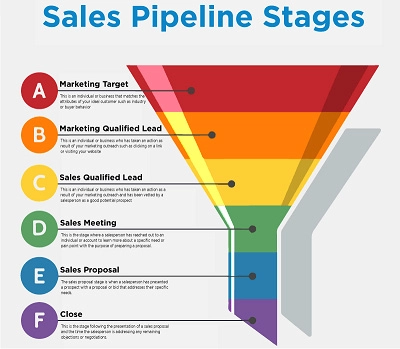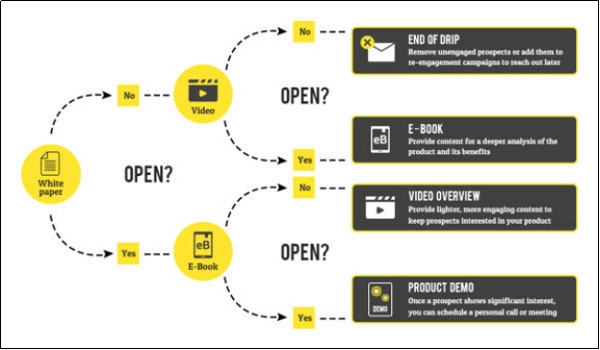
Introduction
For a long time, sales and marketing functions in B2B companies have been considered distinct. But this is quickly changing. But as the attention of businesses across the globe shifts to recovery following the Covid-19 pandemic disruption, aligning the two functions will even be more critical.
Already, statistics show that misalignment between these two functions costs businesses over one trillion dollars every year. Marketers have to hand marketing qualified leads (MQLs) over to the sales teams as sales qualified leads (SQLs) at some point in the sales process. Where sales and marketing teams are not aligned, a significant amount of marketing efforts and resources go to waste.
In ordinary situations, estimates show that up to 70% of marketing content is not used and 75% of leads that marketing teams hand over to sales teams don’t convert to sales. With companies seeking to block more losses than they have already suffered, marketers and sales reps will appreciate the need for the two to work together as 2022 approaches.
Each of these teams has their place in the sales funnel. Marketers play a central role in attracting prospects and nurturing them into MQLs while sales teams are instrumental in converting SQLs into customers. However, the two teams must work together to make this happen – and there is evidence to support this. Statistics show that aligning sales and marketing teams increases sales win rates by 38%. Companies that have aligned the two functions well have seen their revenue grow faster by 24% and their sales teams are 67% more efficient when it comes to closing deals.
The Sales Pipeline
When you think about the sales pipeline funnels, leads go through various stages before they become customers.

Here’s a quick description of leads as they move down the sales funnel:
- Subscribers: These are individuals that are not engaged with your business. They’re in the early stage of the buying process and are basically checking for updates in their topic of interest or industry. When they visit your site and find information that interests them, they’re likely to sign up for newsletters and other materials you might have available.
- Leads: These are subscribers who begin to warm up to your company. They are very much aware of their needs and join your mailing list with a very specific intention like accessing gated content like white papers, ebooks and high level articles. Leads are most likely searching for a solution to a specific problem.
- Marketing-Qualified Leads (MQLs): On the buyer’s journey, these leads are in the evaluation stage. They are aware of their problem, they know the solution they need and are in the process of searching for a product that offers that solution. MQLs fit very well in your ideal customer profile and are potential customers for your business.
- Sales-Qualified Leads (SQLs):These are sales-ready leads. In the B2B context, they are individuals who hold authority to make purchase decisions. This means they’ll likely stay through the sales negotiation process if your company provides valuable content that places it ahead of the competition.
- Opportunities: SQLs become opportunities when serious sales negotiations are initiated. On the buyer’s journey, these are in the purchase stage. Opportunities engage regularly with the sales team until the deal is closed.
How Will Sales and Marketing Alignment Boost Conversion of MQLs into SQLs in 2022?
Aligning sales and marketing teams means the two functions optimise their processes. In 2022, marketing and sales funnels will collaborate to reduce costs and drive growth as businesses get to the recovery phase of the Covid-19 pandemic.
With the changing behavior of B2B buyers, marketers will have to work closely with sales teams at every stage of the selling process in order to successfully nurture MQLs to SQLs. As we get into 2022, here’s how conversion of MQLs into SQLs with sales and marketing alignment will be different for B2B companies:
- Start With Intensive Marketing Campaigns
Coming in the backdrop of a pandemic, 2022 will see sales and marketing teams in B2B companies collaborate to launch intensive awareness campaigns to attract prospects. Before they can convert MQLs into SQLs, companies will have to attract MQLs. Due to the effect that the pandemic has had on businesses, B2B marketers and sales reps will have to create a large pool of prospects that they can nurture into MQLs and convert into SQLs. Most companies will focus tripling, if not quadrupling the pool of prospects they generate at the top of the funnel.
Though this strategy isn’t new, B2B sales and marketing teams will have to invest more time in creating awareness among their target audience during the recovery period. These campaigns will be focused on creating brand awareness and the problems that their offerings solve. Some marketing activities that sales and marketing teams will undertake to push MQLs down the sales funnel in 2022 include:
- Assessing content needs of their audience
- Creating marketing content for different buyer personas and buyer journey stages
- Promoting published content via social media
- Increased Involvement in Social Selling
Social selling has been a buzzword in the last couple of years, but in 2022, it’s going to be at the heart of B2B sales processes. B2B marketers and sales reps will use social selling to nurture MQLs into SQLs by sending MQLs targeted content at regular touch points with the aim of pushing them down the funnel. In 2022, we’ll see B2B marketers and sales reps increase their engagement with MQLs on B2B social media platforms such LinkedIn, Twitter, YouTube and Facebook for the reasons in the image below .

To succeed in social selling, B2B marketers will prioritize the digital customer journey. Since the pandemic enhanced the adoption of remote work, remote selling will take center stage in 2022. For B2B marketers and sales reps, the priority will be to rethink the digital path that prospects take to become customers. As such, 2022 will see more sales reps spending time on:
- Social selling
- Building relationships
- Sharing content that’s relevant to MQLs
On the other hand, B2B marketers will focus more on leveraging data to deliver highly personalized and targeted campaigns to MQLs.
- Need to Drive Target Audience Traffic to Gated Content
After attracting high numbers of prospects at the top of the funnel, sales and marketing teams will invest more on running ads that direct MQLs to gated content with the aim of aiding their sales process. B2B companies, particularly those that apply the account-based marketing (ABM) approach will leverage multiple digital tactics in 2022 to increase brand visibility in multiple online spaces where their target MQLs spend time. The idea here is to make gated content that’s designed to push MQLs down the funnel visible to MQLs everywhere they go.

Three strategies will feature prominently in this approach:
- Social media strategy: B2B marketers will utilize their targeted account details or CRM lists to run social media campaigns. Account features such as job titles, departments and interests will be used to inform these strategies
- Programmatic display strategy: B2B marketers will run programmatic campaigns that allow them to display their ads on sites that their target audiences visit. To do this, marketers will use account lists, email lists and even physical addresses to inform their campaigns. The programmatic campaign strategy will boost B2B company brand awareness among MQLs by causing their ads to display on every site their MQLs surf.
- Ad retargeting strategy: B2B marketers will use this strategy to display social or display ads to their anyone in their target account list anytime they visit the company website.
These strategies ensure that MQLs never go ad-blind. They constantly see your brand identity, thought leadership or name at every turn which increases your chances of converting to SQLs when they’re ready to buy.
- Adoption of Aggressive Lead Nurturing Strategies
B2B marketers and sales reps will become more aggressive in nurturing leads in 2022. With the negative impact that the Covid-19 pandemic has had on sales revenue, nobody will be willing to let a prospective lead to fizzle by dragging their feet.
In 2022, sales and marketing teams will leverage marketing automation to run email campaigns through nurture emails, sales drips and newsletters to guide MQLs through the next steps.

Sales teams will also become more involved in lead nurturing in 2022. B2B companies will have their sales reps send personal messages to MQLs to help them take the next step or convert to SQLs. We’ll see more marketers get on the phone with decision makers persistently to share useful information on how the solutions the company offers solves their problem with the aim of converting them to SQLs.
The Bottom Line
After the Covid-19 pandemic caused sales revenues for most companies to drop, converting MQLs to SQLs will be a priority of most B2B marketers and sales reps come 2022. However, the strategies that marketers have been using in previous years might not work in 2022. B2B companies that will succeed in converting MQLs to SQLs will be those that adopt to the current environment and deploy lead nurturing strategies that respond to the changes caused by the pandemic.
Our blog
Latest blog posts
Tool and strategies modern teams need to help their companies grow.

Running a business comes with its own set of challenges, especially when it comes to ...

AI is surely a futuristic concept but it evolves today, particularly in sales and mar...

A successful webinar requires more than just a great speaker and a compelling topic. ...







